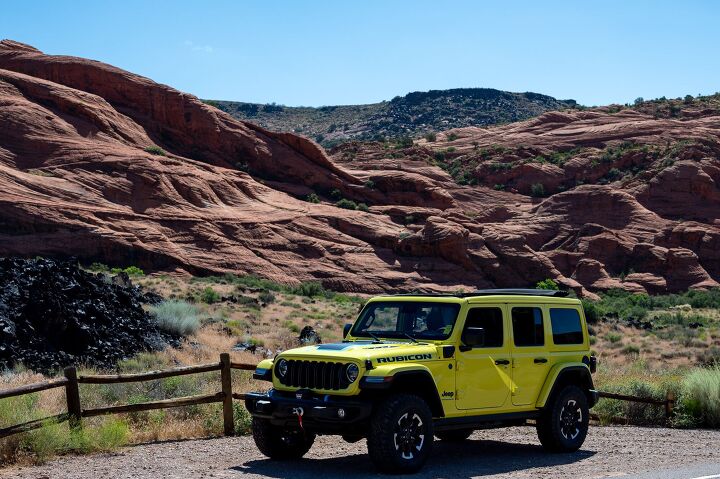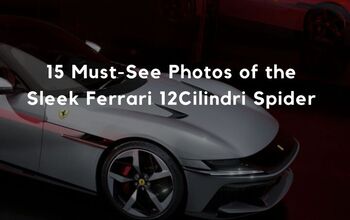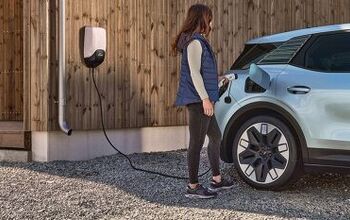2024 Jeep Wrangler Review: A Refreshing Refresh

I was a latecomer to the Jeep lifestyle. As the bumper sticker says, I didn’t understand the Jeep thing. I’d briefly driven a couple of older ratty and rattly CJs in my time as a service writer a decade or so ago, trying to pinpoint suspension issues for the techs who were too busy not torquing lug nuts to actually do diagnoses. But the whole thing was an issue, each old Jeep driving poorly on-road - the only terrain I’d ever encountered on purpose.
But then I bought one when our minivan grew old and my bride expressed a desire for more wind-in-the-hair motoring on her commute. Four doors and toplessness seem to be mutually exclusive outside the offroader realm, so to the Stellantis dealer we went. And then I began to see what everyone else already knew.
The 2024 Jeep Wrangler is refreshed, building upon the JL platform introduced in 2017 to much fanfare. Jeep sent journalists to southern Utah to experience the refreshed 2024 Jeep Wrangler in a variety of flavors in the terrain seemingly built for the Wrangler lifestyle. Is it still the one?
[Disclosure: Jeep flew the author to Utah, feeding and housing me for two nights.]
The news here is that by the end of 2025, the entire Jeep lineup will be fully electrified in some fashion. Realistically, that means that the 4xe hybrid powertrain (2.0-liter turbo with electric motors) will be the final gasp of dino juice in a Wrangler. If you want the 3.6-liter V6 or the tasty but thirsty 392 Hemi, it’s best to get ordering it now as you’ll only have two more model years.
Not that you’re missing much if you opt for the 4xe. It adds 105 horsepower to the already sufficient two-liter turbo four (now a total of 375 horsepower and 470 lb-ft of torque) but 21 miles of all-electric range means gas-free mall-crawling or even silent running on the trails. It was a bit odd to find myself creeping along while in the desert in a trail of other Jeeps, some of which were roaring with the 392 V8, in total silence.
New this year for the hybrid is the available 4xe Power Box - basically a power strip for your hybrid Wrangler. A quartet of 120v outlets with a maximum of 30 amps output allows you to power a number of devices while camping or even use it for a bit of emergency power for your household should the gales of November come early.
The Rubicon model, traditionally the most capable off-roading Wrangler this year adds a Dana 44 full-floating rear axle. A full-floating rear axle uses additional tapered roller bearings on a spindle at the end of the axle housing, rather than forcing all of the vehicle’s load to ride on a single bearing at the end of the axle shaft. This gives plenty of additional load capacity, allowing those who wish to add even taller tires to their Rubicon to do so without needing to upgrade the axle. This also gives the Wrangler - when equipped with either the 2.0 non-hybrid or the 3.6-liter V6 and an automatic transmission - the ability to safely tow 5,000 pounds.
I tried a V6-powered Wrangler Rubicon towing this Airstream Caravel travel trailer - the quoted weight was right around 4,200 pounds. The Wrangler certainly noticed the additional weight - hanging in a higher gear while ascending a grade wasn’t uncommon - but it does feel confidence-inspiring. This somewhat reverses a common scenario with Wrangler owners, who will often flat-tow a Jeep behind a motorhome, then use the Wrangler for excursions. Here, one could conceivably use the Jeep as an adventure vehicle after dropping a travel trailer at the trailhead. That said, nothing has changed regarding the flat towing, as it’s still as simple to do as ever.
That additional large-tire capacity is tested from the factory with the Xtreme 35 (my spellcheck hates that word) package, adding 35” BF Goodrich all-terrain tires to beadlock-capable wheels. It’s available on the Rubicon, and available on the Rubicon X package, an upgrade for 2.0-liter and 3.6-liter Rubicons that also adds the Rock-Trac full-time transfer case, integrated off-road camera, and steel bumpers to the usual Rubicon goodies such as electronic front swaybar disconnect and front/rear axle lockers.
The Rubicon can be specified with a first for Wrangler - a factory-installed winch. The 8,000-pound capacity Warn winch is equipped with a synthetic cable and can easily get you (or a randomly-strewn off-road buggy as in this photo) out of a hairy situation. Ordering the winch gets you a steel front bumper to handle it.
Visually, the refreshed Wrangler looks a wee bit different from the exterior due to the new grille, which is slightly shorter vertically due to the needs of the optional winch. However, the traditional seven-slot grille is a bit more open to allow for additional cooling. Jeep is also highlighting the removal of the traditional mast antenna from the right front fender, as it’s now integrated into the windscreen. That windscreen is now made of Gorilla Glass in every Wrangler save for the base-model Sport trim, as the bluff face of a Wrangler loves to push every possible sharp pebble right into the flat windscreen. Ask this Wrangler owner how he knows.
The removal of the traditional antenna adds one benefit to the beloved trail-ready nature of the Wrangler - it removes a point where the vehicle can snag on tree limbs or low-hanging brush. Another minor win for winter - you don’t have to weave your arms around the antenna when scraping the ice off your windscreen.
Safety additions include standard front and second-row side curtain airbags that deploy from the rollbar area above the doors. On the Sport S trim and above (basically excluding only the base Sport trim) the Wrangler is now fitted with adaptive cruise control and forward collision warning.
For the interior, the most noticeable change at first will be to the dashboard, as a standard 12.3-inch touchscreen dominates your field of view. It’s much more clear than the old eight-inch model, having been designed to minimize glare even in direct sunlight such as what one might find with the top removed in the middle of the desert. I can attest that it was quite legible even as my neck turned pink since I forgot to apply sunscreen.
The 12.3-inch screen is now equipped with UConnect 5, the operating system that has been in use for several years now on other Stellantis products such as the Pacifica. It’s easily one of the best out there, winning praise for legibility, responsiveness, and ease of use. Wireless Apple CarPlay and wireless Android Auto are now standard.
On the Wrangler, the UConnect 5 can also have built-in trail maps from Trails Offroad. Around 200 trail maps will be included initially, including all 62 Jeep Badge of Honor trails. A premium subscription for around $40/year will allow owners to download trail maps for over 3,000 trails across the country. This eliminates the need for owners to mount tablets to their dashboard for mapping purposes, as each trail will have difficulty ratings and waypoints built in allowing owners to go adventuring on a whim. Surely this is a feature that won’t trickle down to the minivan.
Additional USB and USB-C ports abound throughout the cabin, as staying connected even as we get away is ever critical. Having taken a number of road trips in my ‘21 Wrangler, the kids were always fighting for juice for their devices. This will make our outings much more pleasant.
Additional noise reduction is welcome, and Jeep has added additional foam insulation to the windshield surround on the High Altitude, Rubicon X, and Rubicon 392 models. Acoustic glass and thicker carpets on those models further reduce wind noise. It’s noticeable.
Oh, and for the first time ever, power seats come to the Wrangler. It’s a feature that has been offered in any number of cars for decades, but as Jeep finds it necessary to ford streams, subjecting electronic components to water like that requires additional work. Even with the power seats, the 2024 Wrangler can submerge up to 34 inches of water. Your shoes will get wet, and maybe your pants, but you can finally have adjustable lumbar support in select trims.
Let’s talk about a few new trim levels. First, the 4xe hybrid package had been limited to higher trims in the past, but as Jeep (and the entire industry) moves toward greater electrification, what Jeep calls America’s best-selling plug-in hybrid is now available at a lower price point in the Sport S trim. The price is $49,995 plus $1,795 for destination charges. If only Jeep allowed for factory pickup in Toledo - which would be a cool experience. We could stop for chili dogs at Tony Packo’s just like Max Klinger suggested on MASH.
My favorite package isn’t specifically new - it actually uses an old name, Willys. The Willys trim has been around for years, but for 2024 it becomes something special. It might even be a Rubicon Light package, as it adds an electronic rear locking differential, steel rock rails for the rocker panels, 33-inch tires, the Selec-Trac full-time transfer case with low-range 4WD, and a tow package. The Willys is easily distinguished by a black grille and high-rise fenders to allow clearance for the taller tires.
Pricing has been mentioned elsewhere, but for the sake of clarity let's highlight a few. Again, all prices are plus the $1,795 destination charges:
The 2-door Sport starts at $31,895 - opting for four doors bumps you to $35,895. Sport S is where you start to get some of the nicer trim pieces, Gorilla Glass, and adaptive cruise - that’s $35,395 for 2-door, $39,395 4-door, and $49,995 for 4xe. Rubicon 2-door is $45,395, 4-door $49,395, and 4xe $60,585. The rowdy Rubicon 392 is four-door only at $87,595.
—
For me, I’m going for the $54,735 Willys 4xe. Here, the plug-in hybrid actually adds performance while bumping up efficiency. The ability to use the 4xe Power Box to power some stuff in my house when the lights go out is brilliant.
For all too long, the good folks in Toledo have been resting on their well-earned laurels. But now, there is plenty of competition in the off-road game. The 2024 Jeep Wrangler builds upon an already solid foundation to make the best off-roader just a little bit better.
[Images: © 2023 Chris Tonn, and the better images courtesy Jeep]
Become a TTAC insider. Get the latest news, features, TTAC takes, and everything else that gets to the truth about cars first by subscribing to our newsletter.

Some enthusiasts say they were born with gasoline in their veins. Chris Tonn, on the other hand, had rust flakes in his eyes nearly since birth. Living in salty Ohio and being hopelessly addicted to vintage British and Japanese steel will do that to you. His work has appeared in eBay Motors, Hagerty, The Truth About Cars, Reader's Digest, AutoGuide, Family Handyman, and Jalopnik. He is a member of the Midwest Automotive Media Association, and he's currently looking for the safety glasses he just set down somewhere.
More by Chris Tonn
Latest Car Reviews
Read moreLatest Product Reviews
Read moreRecent Comments
- 28-Cars-Later So the company whose BEVs are without proven lifespan and mired in recalls wants to further cheapen materials and mfg costs of the very same thing they already cannot sell? I don't know if Ford is going to still exist in 2030 (assuming the nation still does of course).
- Fred We want our manufacturing to pay good wages, provide healthcare, not pollute and provide a safe workplace. Many places around the world don't, so we put a tariff on them to force them. That's the way it should be, but I'm afraid this is just a political move by Biden to take away one of Trump's talking points.
- Orange260z Modern Cadillac sedans look and drive great. Yeah, the interior materials aren't quite as good as the competition, but if they undercut them in price it can offset. IMHO, they need to step up in a big way on their warranty, service and customer service. H/K/G shows confidence in the quality of the product by offering long standard B2B warranties and low-cost exclusionary extensions. My Caddy became a money pit after the warranty with only 75K kms; yes, the Germans do that, but they have the established cachet that they get away with it. They need to make sure that their cars still look good after 10 years (i.e. no trim issues, no undercarriage rust issues, etc) - my CTS was all rusty underneath after two years, they told me that was acceptable and not under warranty. Cadillac needs to do more.In Canada, there are few (if any) standalone Cadillac dealerships; they are typically co-located with all the other (remaining) GM brands. However, this doesn't have to be a kiss of death - Lexus successfully built their rep despite co-location, by investing in dedicated Lexus sales areas, sales people, service advisors, technicians, lounge areas with private offices, perks (free coffee/treats, car wash and vacuum with any service, a large complimentary Lexus loaner fleet available for any service visit), etc. By contrast, for Cadillac service I would line up with the 20 other people waiting for one of 5-7 service writers that know nothing about my car because they service 10,000 different GM models, answering a question about maintenance requirements "How am I supposed to know?". During the first 4 years I had access to complimentary Enterprise rental cars as loaners, but I had to spend 20-30 mins going through a car rental process every time. The guy who would do complimentary service washes did so with a big scrub brush he just used to wash a work truck that was covered in mud. They can't sell a premium car with crappy service like that, they have to be better than their competition.If it weren't for these issues I would not have hesitated to buy a new CT5 V-sport (winter DD, want AWD). I bought a G70 instead, we'll see how that goes - but at least I have a long B2B warranty.
- Jalop1991 Are tariffs the right answer? Ask China and Japan. They've imposed lots of protectionist tariffs over the years, but somehow our doing so is horrible or something like that.Let's do the Japanese inspection to the Chinese junk imports, and make the Chinese pay for them.BYD--now available at Walmart and Amazon.
- Scott This seems very BOEING of FORD....


















































Comments
Join the conversation
Very nice writeup.
Honestly the TrailsOffRoad Integration is a great use of the nav screen.